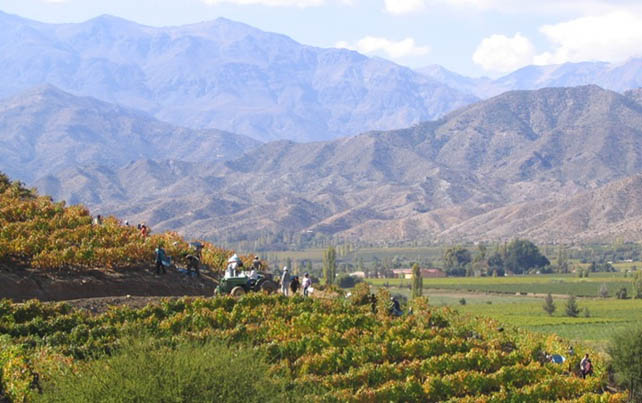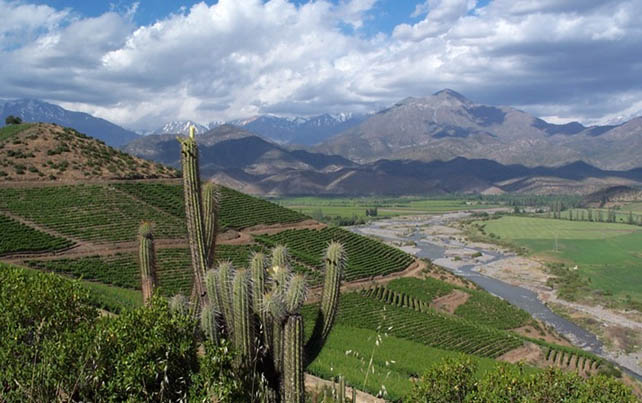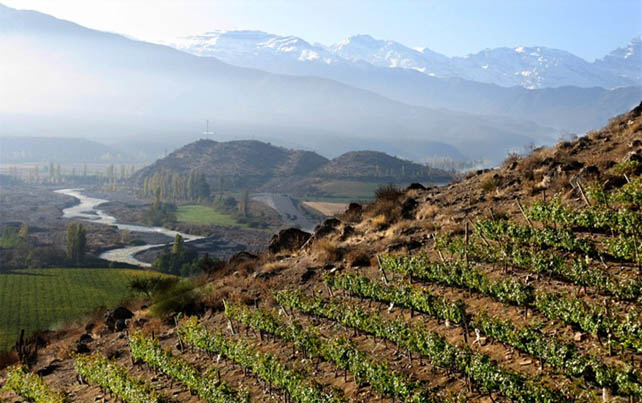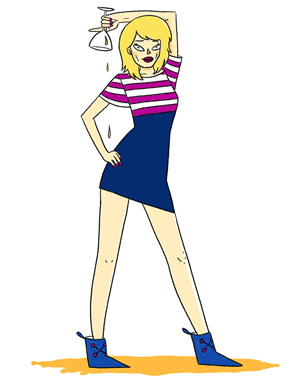
Aconcagua
Long and skinny and still unsure of its identity. Is this a fair description of Chile? Well it’s just 200 miles wide and 3000 miles long with diametrically opposed growing conditions from the Atacama desert in the North to Austral in the Patagonian south, where things are damn chilly. My impression at a recent presentation of Chilean wines in London was of a country trying to be all things to all people.
What does Chile mean to you? Maybe the mass market Cabernets and Merlots of the Nineties – those budget supermarket staples? This was the typical image of 20 years ago, but then Chile became as well known for its Sauvignon Blanc in the Naughties. These were quite nice, but the Kiwis had already played the ‘green pea’ card and done it better.
Maybe Chile conjures the image of deluxe wines – the glossy offspring of upmarket old world wineries who got into bed with the Chilean landed gentry? For these you need deep pockets.
Or do Chile’s eco credentials spring to mind? Chile is working hard promoting its squeaky clean viticulture. Surrounded by desert, mountains and sea, it’s a viticultural haven with fewer pests and diseases than here in Europe and hence less chemical intervention is needed. In Chile land is traditionally owned by a small minority of prosperous patrons. Labour is cheap and hence vineyards can be cultivated largely by hand. It’s also economically and practically more feasible to work organically in Chile than in Europe and many producers fly the organic flag. Viticulture is sustainable to boot as vineyards are watered using flood irrigation – fresh, clean water from the melted snow of the Andes. Many also favour bio culture and keep llamas, alpacas and the like on the same farm. Just a moment – sounds a bit like the NZ wine marketing bureau – but without the livestock.
Or do you immediately think “Chile the oldest, New World region.” Wines of Chile, the official body, are hard at work pursuing this angle. Vines were taken to Chile initially by the Conquistadors and much later in the Nineteenth century Bordeaux varieties were exported to Chile during the phylloxera outbreak in Europe. (Phylloxera doesn’t like flood irrigation.)

Aconcagua
But what does this mean for the wines of Chile today? Well most notably it’s given them Carménère as their flagship variety, for it was not Cabernet Sauvignon and Merlot which packed their passports for the new world, but Carménère and Malbec. Malbec found its niche over the Andes in Argentina. This was a serendipitous relationship as Malbec and Mendoza were made for each other, while Chile took in Carménère. It’s a variety, a bit like Cabernet Franc, which has to be well ripened, but for my palate is coarse in comparison. Carménère has high level of pyrazines, giving that green pepper, herbaceous character. If I were Chile I would not pin my flag to a mast made of Carménère. There are better quality varieties thriving in Chile.
In fact I was surprised to learn there are seventy varieties grown in Chile. This reflects the diversity of growing conditions along Chile’s 3000 mile length, but also the skinny width gives distinctly different conditions. Three have been officially designated: A cool coastal region, a warm central valley and the foothills of the Andes. We’re familiar with the Californian fog effect, well it’s the same here. Warm air rises in the valley and cold air from the Pacific (the Camanchaga fog), rolls in to fill the vacuum, lowering the temperature. This diurnal temperature – warmth for ripeness and cool air which preserves acidity makes nicely balanced wines.
In the cooler coastal region the pacific draft threads its way through a dwarf mountain range and it’s here you can find the Leyda valley. I went there 16 years ago looking for a good Pinot Noir and I found one – Vina Leyda. It was a pleasant surprise to find it still being imported to the UK. The single vineyard called Las Brisas makes a juicy wine with cranberry fruit, black pepper, crunchy tannins and plenty of energy. While Ventolera winery produces a layered and more complex Pinot Noir with dark cherry, bitter chocolate notes and suede soft tannins. Both show a good balance of ripe fruit and freshness…you can appreciate the cool breeze in the Leyda valley.
Staying with the cool coast, but in the Aconcagua Costa, Errázuriz also turns out a succulent, inviting Pinot Noir. This is ripe and rounded with warm strawberry jam flavours, very fruit driven with sweet tannins. Casa Silva has a light and breezy Syrah with soft tannins, prune notes, rounded, but fresh from the Colchagua Costa.
Syrah can do much to ameliorate the grassiness of Carménère which is better where its strong personality is diffused in a blend. 2011 Pérez Cruz Liguai, from Maipo Alto, is a blend of 40% Syrah with 30% Carménère and Cab Sav. It is aromatic with hints of nutmeg and orange zest – lots of oak for sure. It’s spicy and supple on the palate with a fresh and assured finish.

The marketing people might say Chile is a blend of the old world and the new, but there’s nothing old world about the way chileans like to mix up their grapes varieties. I was almost at the end of the tasting when I tried a very perfumed, quite mature wine which immediately intrigued. It had woodland notes, green tomatoes and cooked plums, which for some inexplicable reason worked together. I looked at the label and remembered this arresting wine from years ago. It’s Valdivieso Caballo Loco 16, Valle Central. A non vintage blend of Cab Sav, Merlot, Cab Franc, Syrah, Malbec, Petit Verdot and Pinot Noir – now that’s what I call crazy!
So what does Chile wannabe? I’d say the marketing people have clocked the success of New Zealand’s clean, green approach and have repackaged it for themselves and of the many angles presented this was the most convincing.
Links
2013 Vina Leyda Single Vineyard, Las Brisas Pinot Noir, £11.99 Enotria Wine
2014 Ventolera Pinot Noir, Leyda £22.49. Hallgarten Druitt for stockists e.g. Oddbins.
2013 Erazuritz Pinot Noir, Acongagua Costa. Hatch Mansfield for stockists. £16.15
2013 Casa Silva Cool Coast Syrah £15.99 Jackson Nugent for stockists
2011 Perez Cruz Liguai, Maipo Alto £24.99 Hallgarten Druitt & Novum Wines
NV Valdivieso Caballo Loco Number 16, Valle Central Bibendum £29.99

